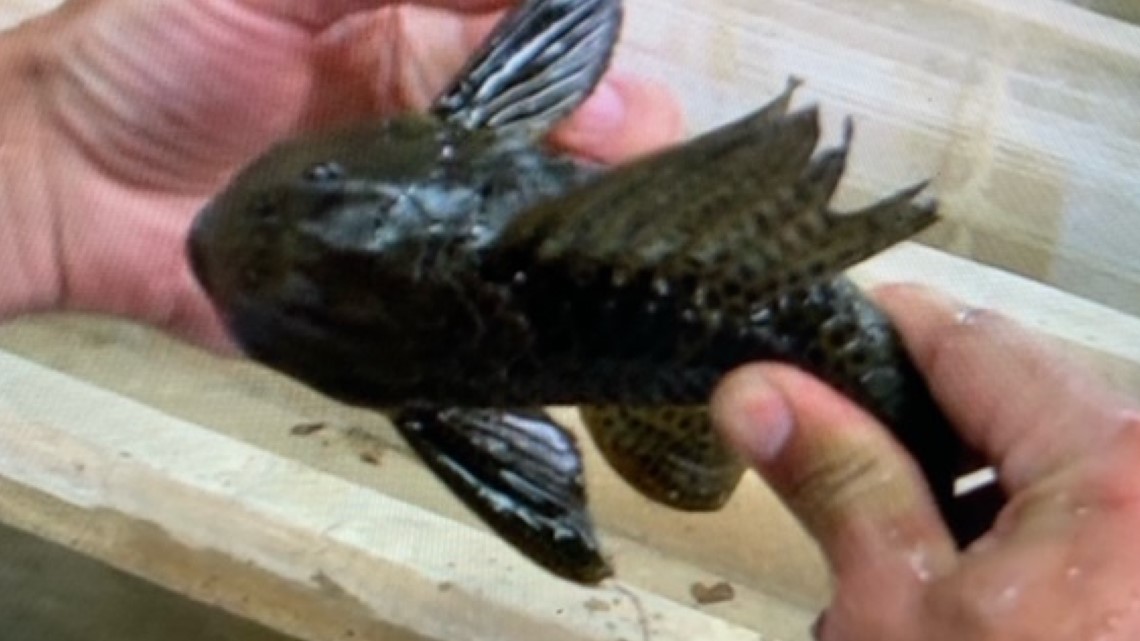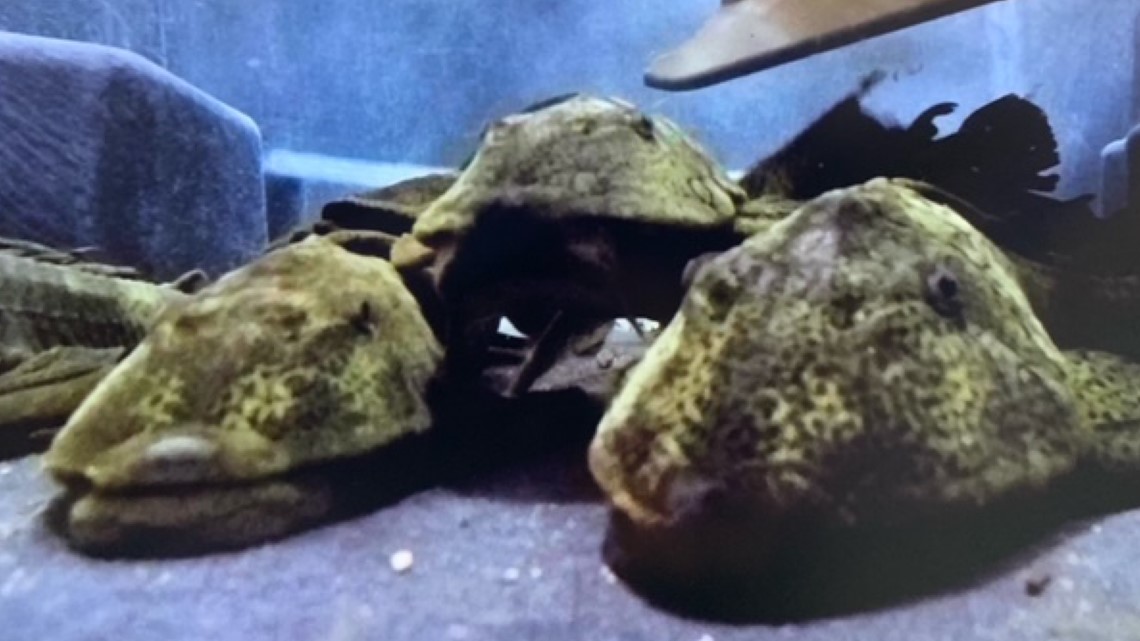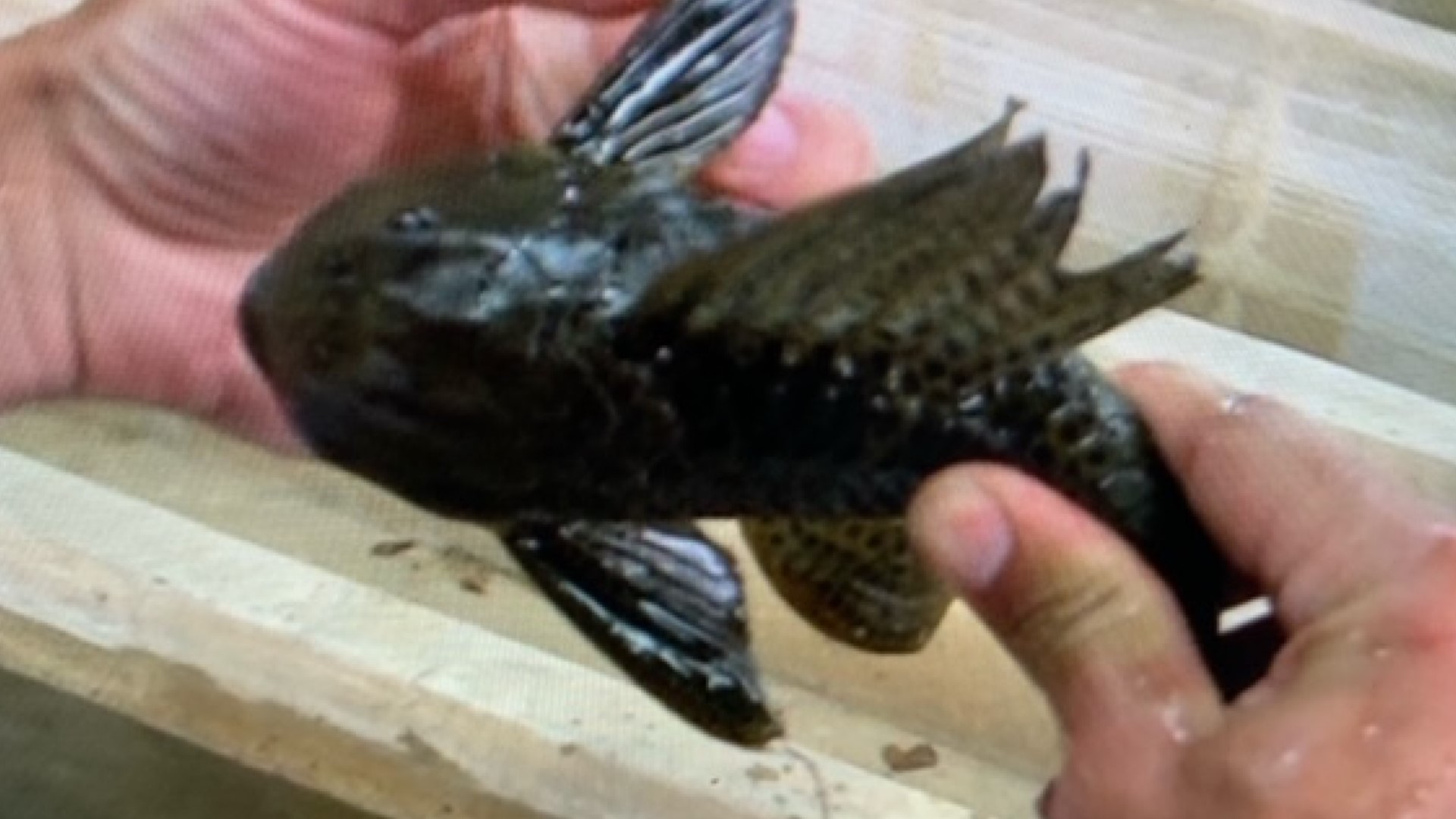SAN MARCOS, Texas — In San Marcos, research scientists are racing to come up with data that could save Texas rivers from the damaging impact of an alien invader. They say an assault is underway by invasive fish that are destroying sensitive habitats all over the state.
Hypostomus plecostomus, also known as the suckermouth or armored catfish, is a native of South America, but their takeover of U.S. waterways is so aggressive, aquatic biologists say they are now considered naturalized.
"The reason the world should care about this work that we're doing is this is a global problem,” said Dr. Joshuah Perkin, an Assistant Professor at Texas A&M University in the department of Ecology and Conservation.
Perkin is part of a team that includes Texas State University and the Texas Parks and Wildlife Department. Perkin said the joint effort is needed because a regional solution is critical.
“It's not just central Texas. It's not just the San Marcos River. It's Comal and San Felipe Creek in west Texas. It's also the bayous in Houston. These fish have also invaded Florida, the southern United States. They're a global invader!,” Perkin said.
The current study involves live capturing the fish and carefully implanting tiny transmitters into them so that their movements can be tracked.
Even though the fish are invasive, Perkin was careful to point out that at each step of the research, the welfare of the fish is important, so the biologists handle them with care. Perkin said they use a natural anesthetic during the implant process, and monitor the fish while they recover from the procedure.
Perkin said they hope to learn many things.
“We don't know how many fish are in the river. We would like an estimate of population size to understand the magnitude of the problem,” Perkin said.
Because the fish burrow into sensitive banks, Perkin said it’s important to know exactly what they’re doing as they scour the river sucking in food.
“We know fish move, but we don't know how much these fish move, so we're putting some transmitters into these fish to understand the scale of their movements within the river,” Perkin said.
Perkin said these bottom sucking omnivores eat everything in their path, including the eggs of many native species that could be in danger of being wiped out.




Perkin said, “The fountain darter is a federally listed species on the endangered species list and so it's already a species of concern.”
Perkin said plenty of other invaders are causing trouble too, primarily because people are dumping their fish tanks into wild waters.
“Any animal that you have kept in captivity should not go into the wild,” Perkin said.
Perkin said even though fish and other aquarium pets aren’t cuddly, people do have emotional attachments to their animals and may feel guilty when they outgrow their aquariums. “It's hard to kill your own fish, and certainly releasing it into the wild might feel like you are doing the right thing, but we do know, based on a mountain of evidence, that these fish can cause problems for native species and ecosystems,” Perkin said.
Perkin said total eradication of the fish is probably not within reach, but what they learn will help.
“We are looking at functional eradication, hoping to reduce the numbers enough so that they don’t cause as many problems,” Perkin said.
The armored catfish have been a problem in the San Antonio River as well. During the January cleaning event of the downtown reach of the river, officials with the San Antonio River Authority said about 500 of the fish were removed from a small section of the channel.
Perkin said the fish can reproduce faster than managers have been able to develop control or eradication strategies.
To learn more about efforts by the state to protect Texas waters, here are some links:
Related links on KENS 5:
RELATED: Invasive species Apple snails, and odd trash items continue to be found in the San Antonio River

